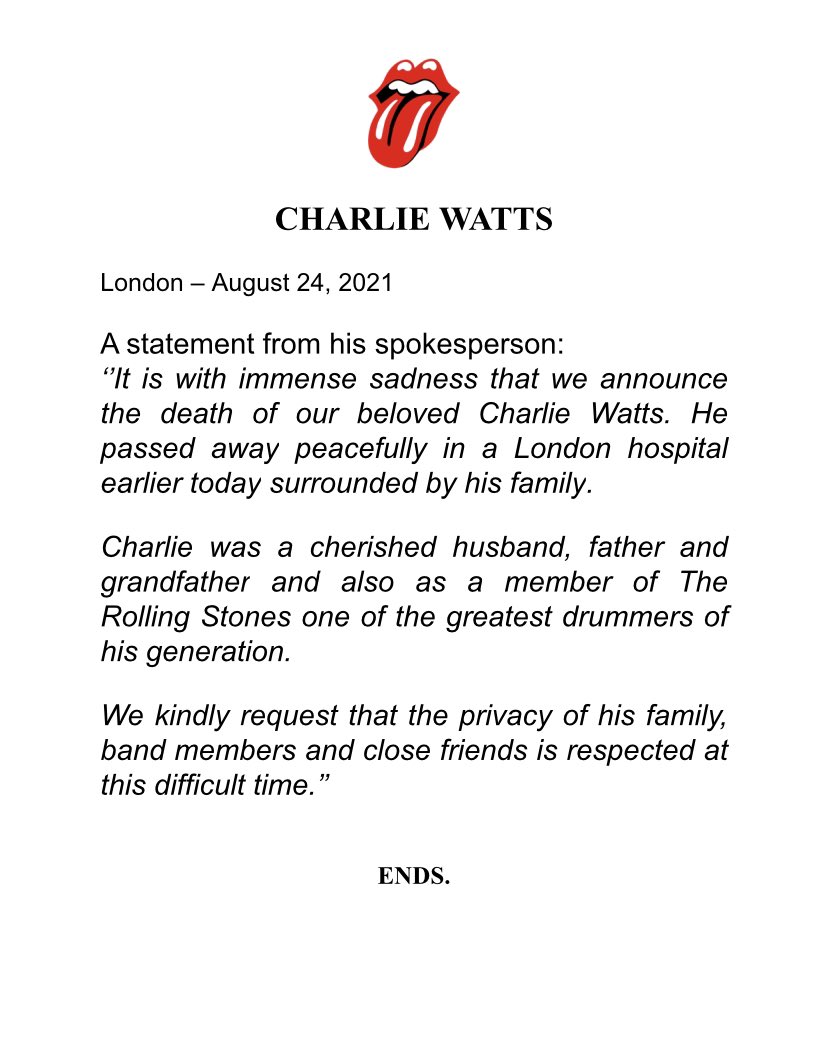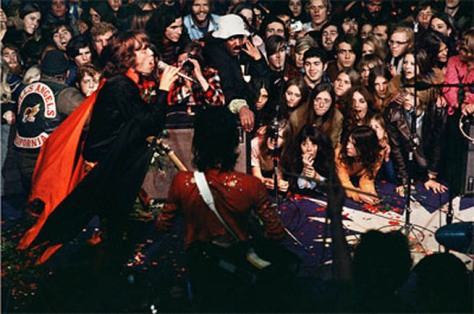By Dennis Hartley
(Originally posted on Digby’s Hullabaloo on October 22, 2022)

Hey…you wanna see something really scary? Real life. Because, let’s face it. Try as they might, Hollywood can never match the thrills, the chills…the abject horror of, say, watching the news, peeking in on your 401k, popping into a Denny’s at 3am, or waiting for the upcoming election results. Documentary filmmakers have been on to this little secret for years.
So forget the exploding squibs, the fake Karo syrup blood and severed prosthetic limbs-here’s my Top 13 list of creepy, scary, frightening, haunting, spine-tingling tales that you literally could not make up (as per usual, in no particular ranking order). Er….”enjoy”?

The Act of Killing – “At first, we beat them to death… [but] there was too much blood…to avoid the blood, I [devised] this system,” explains former Indonesian government death squad leader Anwar Congo, the “star” of Joshua Oppenheimer’s audacious documentary, and then helpfully gives us an instructive (and macabre) demonstration of his patented garroting method (with the assistance of a stick, some metal wire, and a giggly “victim”).
Then, the eupeptic Congo breaks into an impromptu cha-cha dance.
This is but one of many surreal moments in Oppenheimer’s film (exec produced by Errol Morris and Werner Herzog). Congo is a self-described “gangster” who claims to have personally snuffed out 1,000 lives during the state-sanctioned liquidation of an estimated 1,000,000 “communists” that followed in the wake of the 1965 overthrow of the Indonesian government.
Congo and Koto were not only amenable to happily skip down memory lane revisiting the scenes of their crimes, but offered to reenact their exploits by portraying themselves in a Hollywood-style gangster epic. This counter-intuitive mash-up of hard-hitting investigative journalism and ebullient “Hey, I have a barn, let’s put on a show!” participation from the very parties the filmmaker aims to expose could make some viewers’ heads explode.
I know what you’re thinking: These men are morally reprehensible, untouchable and beyond redemption, so why indulge them this sick fantasy? (Picture the warm and fuzzy feeling you’d get if the next Powerball winner turned out to be one of those 97 year-old former Nazi camp guards). What’s Oppenheimer’s point? Is he crazy? He’s crazy all right. Like a fox. Because something extraordinary happens to one of our “heroes” when he insists on playing one of his own victims in an execution reenactment. Watch it and be amazed. (Full review)

The Atomic Cafe – Whoopee, we’re all gonna die! But along the way, we might as well have a few laughs. That seems to be the impetus behind this 1982 collection of cleverly reassembled footage culled from U.S. government propaganda shorts from the Cold War era (Mk 1), originally designed to educate the public about how to “survive” a nuclear attack (all you need to do is get under a desk…everyone knows that!).
In addition to the Civil Defense campaigns (which include the classic “duck and cover” tutorials) the filmmakers have also drawn from a rich vein of military training films, which reduce the possible effects of a nuclear strike to something akin to a barrage from, oh I don’t know- a really big field howitzer. Harrowing, yet perversely entertaining. Written and directed by Jayne Loader, Pierce Rafferty and Kevin Rafferty (Kevin went on to co-direct the similarly constructed 1999 doc, The Last Cigarette, a take down of the tobacco industry).

Brother’s Keeper– An absolutely riveting true-crime documentary about a dirt-poor, semi-literate rural upstate New York farmer named Delbert Ward, who was charged with murdering his brother in 1990. Filmmakers Joe Berlinger and Bruce Sinofsky follow a year or so in the life of Delbert and his two surviving brothers, as they weather pressures of the trial and the surrounding media circus .
The clock seems to have stopped around 1899 on the aging bachelor brothers’ run-down farm, where they live together in relative seclusion in a small, unheated shack (at times, one is reminded of the family in the classic X-Files episode, “Home”)
The prosecution claims the brothers conspired to kill their ailing sibling, coming up with some odd motives. The defense attorney’s conjecture is that the victim died of natural causes, and that Delbert was coerced by law enforcement into signing a written confession (admitting a “mercy killing”), taking advantage of the fact that he is poor and uneducated. He also cagily riles up the town folk to rally behind “the boys” by portraying the D.A. and investigating authorities as city slickers, out to railroad a simple farmer.
Is Delbert really “simple”? Watch and decide for yourself.

The Corporation – While it’s not news to any thinking person that corporate greed and manipulation affects every life on this planet, co-directors Mark Achbar and Jennifer Abbott deliver the message in a unique and engrossing fashion. By applying a psychological profile to the rudiments of corporate think, Achbar and Abbott build a solid case; proving that if the “corporation” were corporeal, then “he” would be Norman Bates.
Mixing archival footage with observations from some of the expected talking heads (Michael Moore, Noam Chomsky, etc.) the unexpected (CEOs actually sympathetic with the filmmakers’ point of view) along with the colorful (like a “corporate spy”), the film offers perspective not only from the watchdogs, but from the belly of the beast itself. Be warned: there are enough exposes trotted out here to keep conspiracy theorists, environmentalists and human rights activists tossing and turning in bed for nights on end.

The Cruise– A number of years ago I became friends with a co-worker who would pace his living room, quaffing beers and expounding on the universe. Sometimes, he would stop dead in his tracks, give me a faraway look, and say, “Trust me, Dennis-you don’t want to be in here,” while stabbing a finger at his forehead. Then, he would resume his pacing and pontificating. The idea of being in someone else’s head is always a bit “horror show”, don’t you think?
If you can take it, Bennett Miller’s one-of-a-kind 1998 documentary portrait spends nearly 80 minutes in “here”. Specifically, inside the head of one Tim “Speed” Levitch, a tour guide for Manhattan’s double-decked Gray Line buses. Levitch’s world view is …interesting, to say the least. And he is nothing, if not verbose. Is he crazy? Is he some kind of post-modern prophet? Or is he yet another eccentric, fast-talking New Yorker? It’s a strange, unique and weirdly exhilarating roller coaster ride through the consciousness of being.

The Devil and Daniel Johnston-The true horror of schizophrenia can only be known by those afflicted, but this 2005 rockumentary about cult alt-folk singer-songwriter Daniel Johnston is the next worse thing to being there. Johnston has waged an internal battle between creative inspiration and mental illness most of his life (see: Brian Wilson, Syd Barrett, Roky Erickson and Joe Meek).
As recounted in Jeff Feuerzig’s film, Johnston, like Chance the Gardener in Being There, repeatedly stumbles into the right place at the right time, steadily amassing a sizeable grass roots following. Everything is in place for his Big Break, until an ill-advised tryst with hallucinogenic substances sends him (literally) spiraling into complete madness. While on a private plane flight with his pilot father, Johnston has a sudden epiphany that he is Casper the Friendly Ghost, and decides to wrest the controls, causing the plane to crash. Both men walk away relatively unscathed, but Daniel is soon afterwards committed to a mental hospital.
The story becomes even more surreal, as Johnston is finally “discovered” by the major labels, who engage in a bidding war while their potential client is still residing in the laughing house (only in America). By turns darkly humorous, sad, and inspiring.

Gimme Shelter – It’s unfortunate that Albert and David Maysles’ 1970 film is chiefly known for its inclusion of (unwittingly captured) footage of the infamous incident at a 1969 Rolling Stones’ free concert at the Altamont Speedway in California where a man near the front of the stage was stabbed to death in full view of horrified fellow concertgoers by members of the Hell’s Angels (who were providing “security” for the show)-but there you have it (and hence its inclusion here). Those scant seconds of the doc’s running time have forever tainted what is otherwise (rightfully) hailed as one of the top rockumentaries. One of the (less morbid) highlights of the film is footage of the Stones putting down the basic tracks for “Wild Horses” and “Brown Sugar” at Alabama’s legendary Muscle Shoals Studios.

Grey Gardens– “The Aristocrats!” There’s no murder or mayhem involved in this real-life Gothic character study by renowned documentary filmmakers Albert and David Maysles (Salesman, Gimme Shelter), but you’ll still find it to be quite creepy.
Edith Bouvier Beale (in her early 80s at the time of filming) and her middle aged daughter Edie were living under decidedly less than hygienic conditions in a spooky old dark manor in East Hampton, L.I. with a menagerie of cats and raccoons when the brothers profiled them (their “high society” days were, needless to say, behind them).
The fact that the women were related to Jackie O (Edith the elder was her aunt) makes this Fellini-esque nightmare even more twisted. You are not likely to encounter a mother-daughter combo quite like “Big Edie” and “Little Edie” more than once in a lifetime. The cult appeal of the Edies was not lost on Broadway; a musical adaptation ran for 2 years.

In the Realms of the Unreal-Artist Henry Darger is not usually mentioned in the same breath as Picasso, but he is a fascinating study. Darger was a recluse who worked as a janitor for his entire adult life. He had no significant relationships of record and died in obscurity in 1973. While sorting out the contents of the small Chicago apartment he had lived in for years, his landlady discovered a treasury of artwork and writings, including over 300 paintings.
The centerpiece was an epic, 15,000-page illustrated novel, which Darger had meticulously composed in long hand over a period of decades (literally his life’s work). The subject at hand: A mythic universe largely populated by young, naked hermaphrodites (the”Vivian Girls”).
Although it’s tempting to dismiss Darger as a filthy old perv, until you have actually seen the astounding breadth of Darger’s imaginary world, spilled out over so many pages and so much canvas, it’s hard to convey how weirdly mesmerizing it all is (especially if you view an exhibit, which I had a chance to do at Seattle’s Frye Art Museum back in 2007). The doc mixes Darger’s bio with animation of his work, with actors reading excerpts from the tome.

An Inconvenient Truth– It’s the end of the world as we know it. Apocalyptic sci-fi has become scientific fact-now that’s scary. In Davis Guggenheim’s 2006 doc, former VP Al Gore is a Power Point-packing Rod Serling, submitting a gallery of nightmare nature scenarios for our disapproval. I’m tempted to say that this chilling look at the results of unchecked global warming is only showing us the tip of the proverbial iceberg…but it’s melting too fast.

Sicko– Torture porn for the uninsured! Our favorite agitprop filmmaker, Michael Moore, grabs your attention right out of the gate with a real Buñuel moment. Over the opening credits, we are treated to shaky home video depicting a man pulling up a flap of skin whilst patiently stitching up a gash on his knee with a needle and thread, as Moore deadpans in V.O. (with his cheerful Midwestern countenance) that the gentleman is an avid cyclist- and one of the millions of Americans who cannot afford health insurance.
The film proceeds to delve into some of the other complexities contributing to the overall ill health of our current system; such as the monopolistic power and greed of the pharmaceutical companies, the lobbyist graft, and (perhaps most horrifying of all) the compassion-challenged bureaucracy of a privatized health “coverage” system that focuses first and foremost on profit, rather than on actual individual need. Better eat your Wheaties. (Full review)

Standard Operating Procedure – There was a fascinating documentary on the National Geographic Channel called Nazi Scrapbooks from Hell. It was the most harrowing depiction of the Holocaust I’ve seen, but it offered nary a glimpse of the atrocities themselves. Rather, it focused on photos from a scrapbook that belonged to an SS officer assigned to Auschwitz.
Essentially an organized, affably annotated gallery of the “after hours” lifestyle of a “workaday” concentration camp staff, it shows cheerful participants enjoying a little outdoor nosh, catching some sun, and even the odd sing-along, all in the shadow of the notorious death factory where they “worked”.
If it weren’t for the Nazi uniforms, you might think it was just folks from the office, hamming it up for the camera. As the filmmakers point out, it is the everyday banality of this evil that makes it so chilling. The most amazing fact is that these pictures were taken in the first place.
What were they thinking?
This is the same rhetorical question posed by an interviewee in Standard Operating Procedure, Errol Morris’ 2008 documentary about the Abu Ghraib prisoner abuse scandal. The questioner is a military C.I.D. investigator who had the unenviable task of sifting through the hundreds of damning photos taken by several of the perpetrators. The “answer” is complicated…and what ensues not easy to watch. Nonetheless, Morris’ film is a compelling treatise on the fine line between “the fog of war” and state-sanctioned cruelty. (Full review).

Zoo-It was disturbing enough when the Seattle press broke the story in 2005 about a Boeing engineer dying from a perforated colon as the result of his “love” of horses. But when it was subsequently revealed that the deceased was a member of a sizable group of like-minded individuals, calling themselves “zoophiles”, who traveled from all over the country to converge on a farm where their “special needs” were catered to, I remember thinking that here was a scenario beyond the ken of a Cronenberg or a Lynch; this was true horror.
That said, there is still a “bad car wreck” fascination about the tale, which makes this an eerie and compelling Errol Morris-style documentary about the darkest side of (in) human desire. To their credit, writer-director Robinson Devor and his co-writer Charles Mudede maintain a sensitive, neutral tone throughout; the film is not as exploitative as one might assume.






























 Stalwart to the end, Charlie Watts was the “rock” in rock ‘n’ roll. Solid, reliable, resolute. He sat Sphinx-like behind his kit for over 50 years, laying down a steady beat while remaining seemingly impassive to all the madness and mayhem that came with the job of being a Rolling Stone. He was cool as a cucumber, as impeccably tailored and enigmatic as Reynolds Woodcock. “Reynolds Who?”
Stalwart to the end, Charlie Watts was the “rock” in rock ‘n’ roll. Solid, reliable, resolute. He sat Sphinx-like behind his kit for over 50 years, laying down a steady beat while remaining seemingly impassive to all the madness and mayhem that came with the job of being a Rolling Stone. He was cool as a cucumber, as impeccably tailored and enigmatic as Reynolds Woodcock. “Reynolds Who?” 





